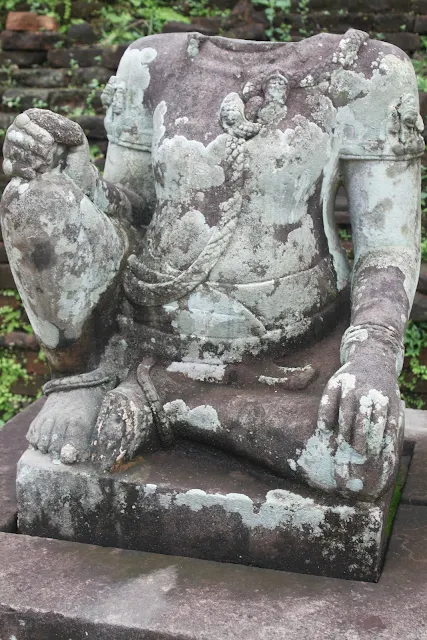Kindly Yours - A collection of writings, thoughts and images. This blog does contain third party weblinks. No AI content is used.
Saturday, 24 November 2012
My Son, Central Vietnam
The grandeur and extent of Hindu based empires in south-east Asia from long ago may be understated in the current make up of the countries that make up ASEAN today. Echoes and suggestions of this significant past influence can only be reminded to us when we visit Bagan in Burma, Ayuthaya in Thailand, Borobudur in Java and the Angkor Wat in Kampuchea. My early history school books did mention about the Champa Kingdom that extended from the 4th to the 14th centuries AD throughout most of what is referred to as IndoChina in contemporary times. So with eagerness, I relished the opportunity to explore the collection of sizable ruins and remains of tower temples at My Son in Central Vietnam (south-west of Da Nang). Sanskrit and Cham languages were heavily used in this hub of religious and political practice, with around seventy structures existing at the height of the power of the Champa Kingdom. "My Son" in the Vietnamese language simply means "beautiful mountain".
My Son is primarily dedicated to the devotion to the Hindu deity Shiva, under the form of the Linga and under the name Bhadresvara. King Bhadravarman who ruled from 380 to 430 AD had a special plea to his successors "Out of compassion for me don't destroy my gifts." It is with sad irony that the ruins were further damaged by American B52 fighter planes when engaging militarily with the Vietcong in the sixties last century. The area also witnessed significant intrusions from the Chinese from up north, notably by General Liu Fang in 605 AD, and to military encounters with the Viet. Most of the standing buildings today originate from around the tenth century AD. Rediscovered by a Frenchman, M.C. Paris in 1898, the site had been reclaimed by the tropical jungles after the advent of the Viet - and the Chams themselves had transformed to a different culture and some of whom are Muslims today. My Son's restoration is mostly supported by the governments of Italy and Japan.
Key icons of the Champa Kingdom include the elephants (photo of their motifs above) and a rich cultural heritage, as exemplified by the show put on for modern day tourists (picture below).
My Son also offers a much appreciated walk in the forest, away from the high density regions in Vietnam, away from the hordes of fast moving motor bikes on city roads and engaging with the atmosphere more akin to the Central Highlands of Vietnam. A gateway (below picture) is only one of varied features of architecture you can examine and feel - there are causeways, long passages, shrine halls, gate towers, fire houses and more. A kalan is a bricked sanctuary used typically to house a deity.
Remains of altars in both pictures above and below are only a shade of what it must have looked like centuries ago. There is an internal gallery at D2, which offers in one spot a collection of the main artifacts.
The buildings that remain in My Son were made of red brick, with only one designated as B1 constructed from stone. An intriguing question is how were the bricks were held together, as no mortar can be evidently seen as not utilised (photo above). Important messages were inscribed on steles and they often relate to commemorations of gifts made to God, whether they are foundations made for altars, pedestals or temples, or community acts such as gifts of treasures or land. .
There is also a Museum of Cham Sculpture in nearby Da Nang, but nothing beats strolling amongst the ruins on a quiet and early Saturday morning, when colourful butterflies seem to float around and above the surrounding foliage - and when visitors can imagine the vibes of another time, another place in history. The then ruling Dua Clan ensured almost ten centuries of continuous development and maintenance. A footnote - there are comparable buildings in Nha Trang, but much more well preserved, further south along the coast in Vietnam.- the Po Nagar Cham Towers. One will not easily forget the boat shaped roofs and carved pilasters of My Son.
Subscribe to:
Post Comments (Atom)
Apparently Weird
The Seemingly Weird Things I Observe Individuals with agitated facial expressions talking loud to themselves in public - as they cleverly ...
-
More than memories of backpacking - aromatic briyani rice on a rectangle sized banana leaf ala natural plate, accompanied by (clockwis...
-
A Sunday morning walk seemed the perfect idea, especially when after several days in a foreign land, mostly taking in touristy sights...
-
A simple but appetising egg omelette as starters. Gulai Ikan Tumis or sour and spicy fish curry. The previous long standing branch...



















No comments:
Post a Comment